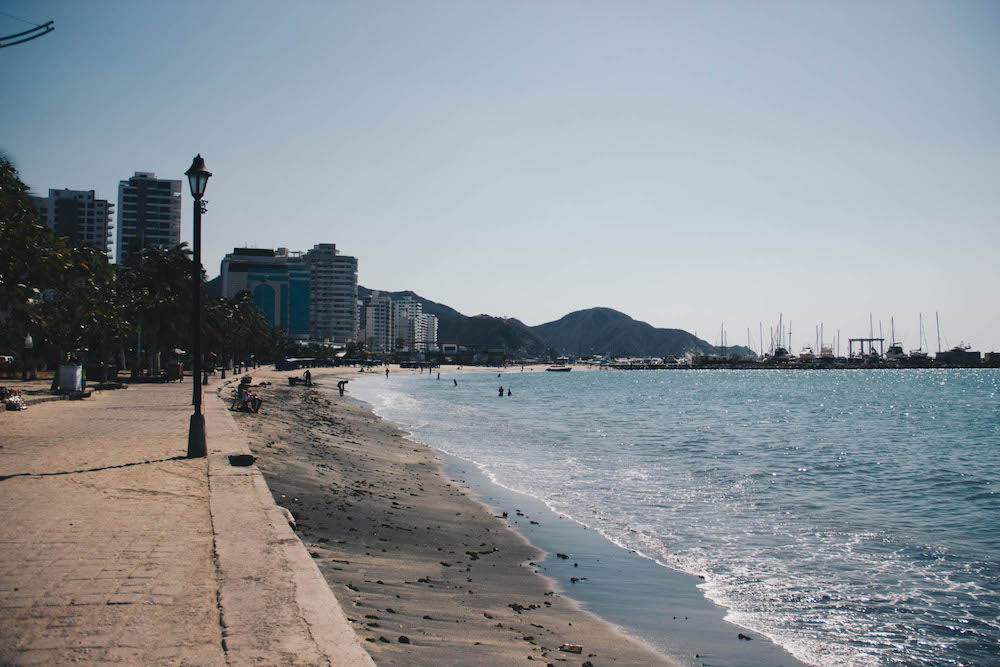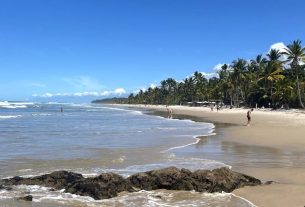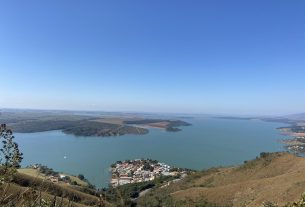The small colorful houses that make up the historic center of Santa Marta may even be a bit reminiscent of Cartagena, but the similarities stop there. Smaller and certainly quieter than its famous sister, Santa Marta is a Caribbean alternative for those who don’t like the crowded streets and aggressive tourist appeal of Cartagena de Indias.
What to do in Santa Marta: the city’s main attractions
- Discover the Historic Center
- Tayrona Gold Museum
- Anthropological and Ethnological Museum
- Watch the sunset at the shore
- Enjoy the nightlife on the streets.
- Spend the day on the beaches of Rodadero, Taganga and Playa Blanca
- Visit the Tayrona National Park
- Visit Minca
- The Quinta de San Pedro Alejandrino
- Go on an expedition to Ciudad Perdida
To see the attractions within Santa Marta it only takes two or three days (one for the center, one or two for beaches). But, if you intend to explore the region, you can stay longer, much longer. At least two or three more days are recommended to see Tayrona. Minca can be done in a day trip or in two days and, for the Ciudad Perdida trail, you need five more. Therefore, it is important to know what you want to do before planning your stay in Santa Marta.
Read too:
• Complete guide to visit the Tayrona National Park
• What to do in Cartagena de Indias
• What to do in San Andrés: tips from the Colombian Caribbean
Historic center of Santa Marta
Don’t forget to check out the Cathedral of Santa Marta (carrera 4 and calle 17). This is one of the most important historic buildings in the city. In addition to being the first basilica to be completed in Latin America, in 1765, the place was the stage for Simón Bolívar’s funeral ceremony.
Nearby is the Boyfriend’s park, The city’s main green space, which gets its name because it is one of the favorite places for couples. Around it are several bars and restaurants, some among the best and trendiest in the city. It’s a good idea to have lunch or dinner there and take a break from the rush amidst the trees and listening to the sound of the sea.
Anyone interested in the history of pre-Columbian civilizations has two right stops in Santa Marta: the Tayrona Gold Museum, which brings together pieces of this culture that inhabited the region before the arrival of the Spanish and that had great skill in handling gold; and the Anthropological and Ethnological Museum also focused on the art of the Tayrona Indians and the people who succeeded them and inhabit the Sierra Nevada to this day. Both museums operate within the Casa de la Aduana (Calle 14 nº 2-07).
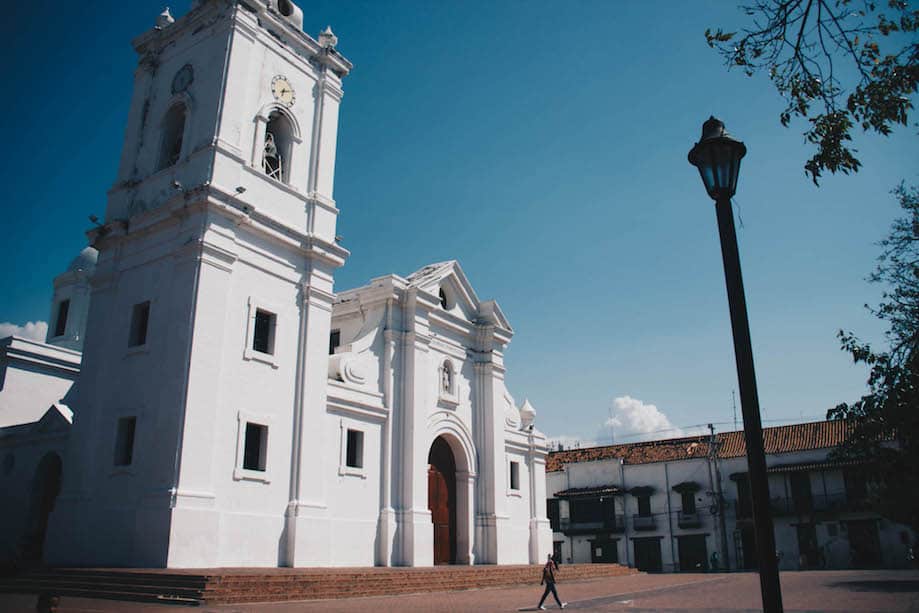
Cathedral of Santa Marta
A Rodrigo de Bastidas Avenue runs along the seafront and is the best place in Santa Marta to watch the sunset or go for a walk on the beach. Every afternoon, the place fills up. Grab your beer and join passersby relaxing on the wall until the sun disappears below the horizon. If you feel hungry, try some of the delicacies of Colombian Caribbean street food sold by the street vendors who are there.
To buy the beautiful indigenous crafts produced in the region, the place is the Cultural Craft Center (Calle 20, 202), where local artisans sell their work at very attractive prices.
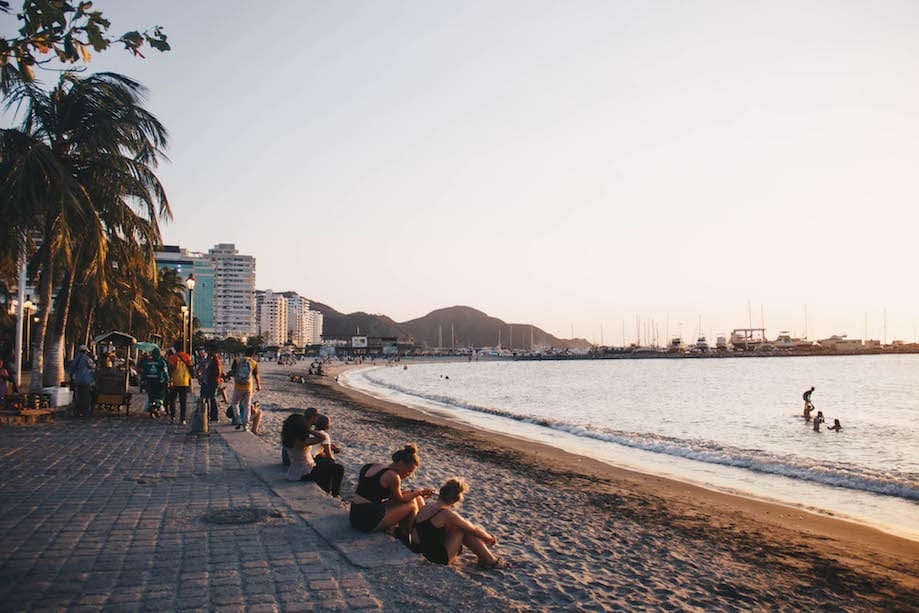
Santa Marta waterfront at dusk
Beaches near Santa Marta
Although it presents us with a beautiful sunset, the beach in the center of Santa Marta is not the best for swimming. To toast under the sun and then cool off in the Caribbean Sea, the best options require some travel. Rodadero It is just 10 minutes from the center, in Gaira Bay, and is one of the favorites of those visiting the city, both for its practicality and the huge hotel offer in the region, as well as for the liveliness of the bars, nightclubs and restaurants on the waterfront. It is a more modern region with greater purchasing power, perfect for those who want to party.
In the same bay of Gaira is the White beach. Much quieter than its neighbor – especially during the week – it can only be accessed via a trail or a short boat trip from Rodadero. The place is famous for water activities, such as snorkeling.
With a more hippie soul, the small fishing village of Taganga It tends to attract backpackers and those interested in diving and natural life. It is 6 kilometers from the center of Santa Marta, where direct buses leave. The place is also one of the gateways to Tayrona National Park, by sea and land, and a base for many boat trips sold in small local agencies.
This is one of the most famous diving spots in the country, which is why there are several diving schools spread across the center. Make sure the one you choose has all safety certifications. The beach inside the town is quite small, but it’s worth the expense if what you want is a swim and a good, cheap local meal.
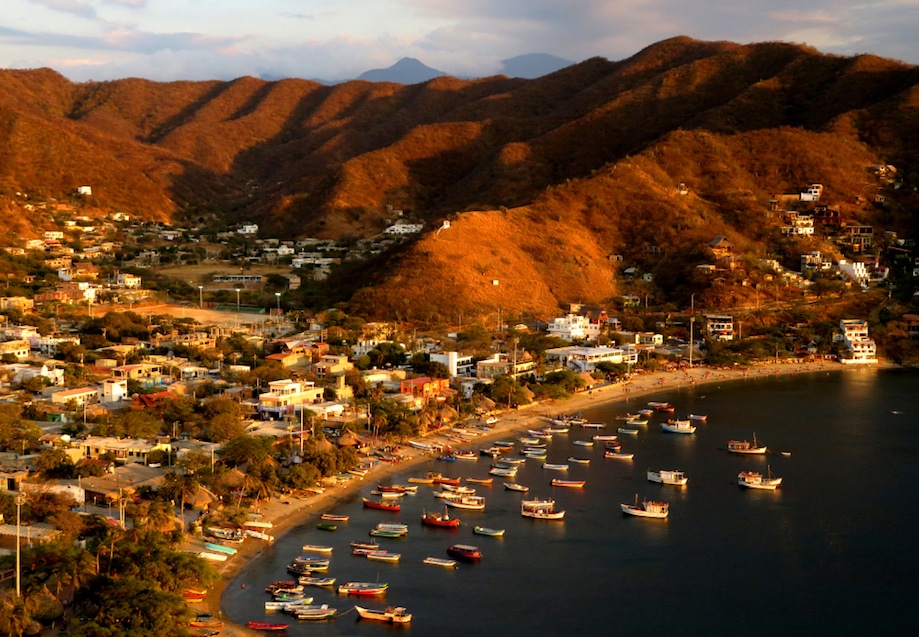
Aerial view of Taganga. Photo: Shutterstock, Lucie Parizkova
The best options, however, are further away from the center of Taganga. With a 30-minute trail across a hill that cuts through the coast, you reach Big beachHowever, the route is not highly recommended by local residents, as there are several reports of theft along this route. The place is also accessible by boat (6 thousand Colombian pesos, round trip).
5 kilometers from Santa Marta, towards Tayrona Park, Palomino It is known for being one of the most beautiful beaches in the region, where the sea meets rivers, mountains and a charming village. The sea is beautiful, but too rough for swimming. One of the visitors’ favorite activities is going down the river kayaking or huge tubes. This activity will be offered to you by tourist hunters as soon as you arrive in Palomino and, with a guide, costs around 30 thousand pesos. From there there are also trails through the Sierra Nevada, where you can see indigenous communities. There are buses from the center of Santa Marta to Palomino.
The Quinta de San Pedro Alejandrino
Avenida del Libertador s/n
Simón Bolivar died on that farm in 1830. Today, the place houses a botanical garden, the Museo Bolivariano de Arte Contemporáneo, with work by artists from the Bolivarian countries (Colombia, Panama, Venezuela, Peru, Bolivia and Ecuador) and a house- museum with Bolívar’s personal objects, including the room in which he spent the last months of his life.
Tayrona National Park
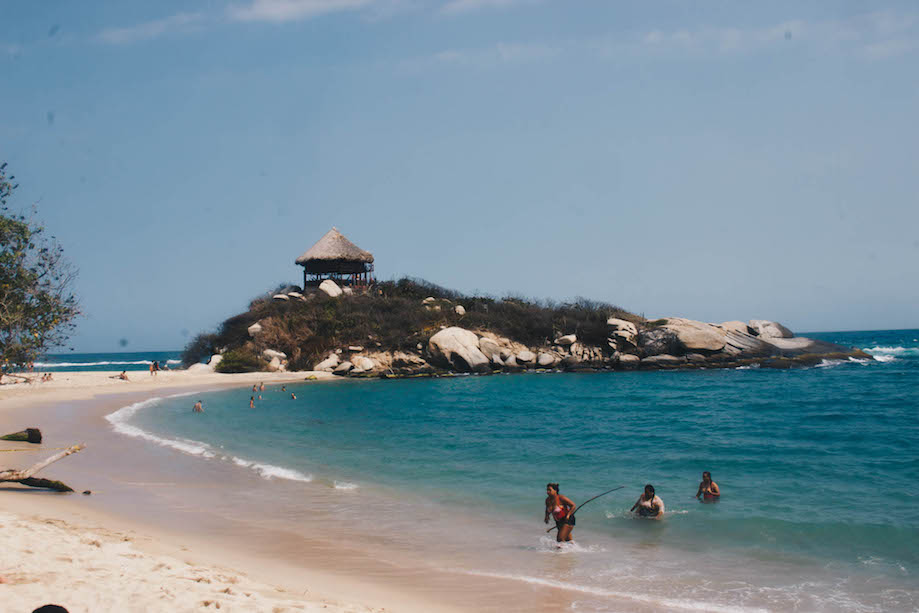
Located at the foot of the magical Sierra Nevada de Santa Marta, Tayrona National Park is a natural refuge that hides among its mountains white sand beaches and blue Caribbean sea, four intact indigenous cultures (Koguis, Arhuacos, Wiwa and Kankuamos) and a dense forest tropical. With 12 thousand hectares on land and 3 thousand hectares at sea, Tayrona is an important place for preserving biodiversity and one of the best trips you will take in the country. To reach the beaches suitable for swimming, you have to undertake a 7.5 kilometer trek between exuberant nature and completely wild beaches. There, the tip is to rent one of the camping tents facing the sea (mattress and bedding included) and enjoy a few days of complete disconnection.
The best beach to stay is Cape San Juan, although it is not possible to cook there and we end up hostage to the only restaurant (and the street vendors selling delicious empanadas). Although a little more expensive than the rest of Colombia, prices there are acceptable. I advise, however, to bring at least some snacks and bottles of water.
Don’t miss the trail that leaves from Cabo San Juan to Village, an indigenous village that preserves the traditional houses of the Tayrona, as well as their worship spaces. The path up the mountain is challenging, but the reward is worth it.
A bus that leaves from Santa Marta’s central bus station leaves at the entrance to the park. Those who prefer can arrive by boat from Taganga. The park closes in February for the purification of the indigenous people.
Coin
Minca is a small town located in the Sierra Nevada. You can make the trip in a day trip from Santa Marta, but many people prefer to spend the night there, in one of the rustic accommodations spread across the region, which is a hub for coffee production. The best-selling hostel is Casa Elemento, a favorite among backpackers because of its hammock over the cliff that guarantees success on Instagram, but there are several options spread across the mountains, some of them inside farms and rural houses.
There, nature is the main attraction, whether on trips to the waterfalls, bird watching or on the various trails that lead to and from the town. Additionally, it is possible to take a tour to an organic coffee farm and see up close how the main national product is made. Be sure to stroll through the quiet streets of Minca to see the bucolic life of the town.
Trekking to Ciudad Perdida
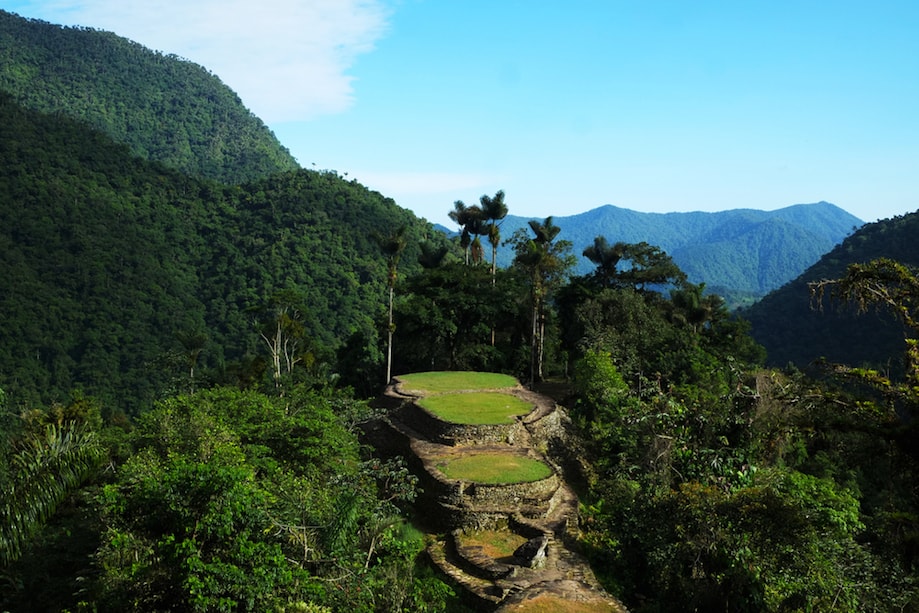
Trekking to Ciudad Perdida lasts between four and five days. Photo: Shutterstock, Cameron John Jones
A four or five day hike (round trip) from Santa Marta takes you to an ancient Tayrona city lost in the middle of the rainforest, otherwise inaccessible. This trek cannot be done on your own, as there is a high chance that you will get lost on the way. Several agencies offer tours with an indigenous guide in Santa Marta. Tours cost around 900,000 Colombian pesos, or around 300 dollars, and include transportation, accommodation along the way and food.
Where to stay in Santa Marta
There is no doubt that the historic center is the best place to stay in Santa Marta. This is where the largest hotel offer is located and also most of the local bars and restaurants. The Mango Tree Hostel has a small pool in the large interior courtyard, breakfast is included and is ideal for backpackers who don’t mind sharing a room with a lot of people. A highly recommended hostel in the region is the Masaya Hostel, which has a swimming pool, rooftop and private or shared rooms. Those who want to pay little and don’t mind walking can check out Hostel Smile, located 1.5 kilometers from the historic center in a quiet residential area.
Find hotels in Santa Marta


